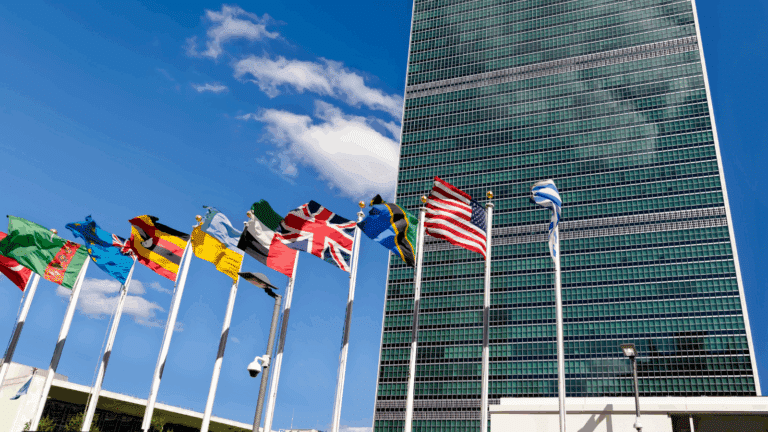INTRODUCTION
No U.S. president wants to see gasoline prices rise as they head into an election. Rolling up to the 2018 midterms in November, which already pose a threat to Republican control of Congress, that is precisely what President Donald Trump is facing. A combination of existing and potential oil supply problems are conspiring to undermine the perception of strong economic performance touted by Trump as a sign of the success of his administration. Should oil markets be on the lookout for an October surprise from Washington aimed at easing consumers’ pain at the pumps?
In this commentary, Jason Bordoff and Sam Walsh look at the issues contributing to higher oil prices and what the President could do to bring them down over the next month. The authors find that, along with the possibility of a more gradual approach to implementation of Iran sanctions, the Strategic Petroleum Reserve would be the most likely tool for the president to use to offset global supply disruptions. Indeed, the Trump Administration has wide latitude to not only make findings that would allow for an SPR release but also to release as much as it deems necessary. Ultimately, however, the president’s significant power may be bound by the mundane: aging and outdated U.S. oil infrastructure might not be up to the task of a substantial drawdown.
BACKGROUND
While supply risks and strong demand have been driving the price of oil higher since last summer, concerns about supplies from top exporter Saudi Arabia gave markets an early jolt on Monday. President Trump and Congress have threatened to retaliate if it is proven that Saudi Arabia was responsible for the death of journalist Jamal Khashoggi. There are now fears that the Kingdom could even respond by cutting oil supplies and driving up prices.[1]
Rising oil prices had already prompted consternation from Trump. He repeatedly attacked OPEC as oil prices rose and even used the opportunity of an address to the UN General Assembly in September to harangue OPEC nations for “ripping off the rest of the world.”[2] In October, oil prices surged past $85 per barrel, nearly double what they were last summer, before easing off a bit over concerns that a weaker global economy may slow demand growth. Even before possible worries about Saudi supply, the threat of OPEC supply disruptions was pushing up prices.
Potentially the most significant threat to supply has been US policy itself as the Trump Administration reimposes sanctions against Iran. Although it is not clear how much Iranian oil the market will lose, the Administration has repeatedly signaled that it will require buyers to zero out purchases of Iranian oil when sanctions take effect next month. Combined with continued Venezuelan declines and chronic risk to Libyan supply, a sharp reduction in Iranian oil production would further tighten physical markets and risk a price spike.
While President Trump may berate OPEC nations for high gasoline prices, there is little they can do to rein in price spikes caused by Trump’s sanctions policy. Nearly every OPEC nation is producing all the oil it can. Saudi Arabia, the top oil exporter and holder of spare capacity, is pumping at record highs,[3] as is giant non-OPEC producer Russia. There is little buffer of spare capacity—oil production that can be brought quickly to market and sustained—to offset further disruptions. Some market analysts speculate, despite its claims to the contrary, that Saudi Arabia may have far less spare capacity than it claims, which exacerbates fears of market shortfalls and leads to higher prices.[4]
TRUMP’S TOOLS
If OPEC can’t ramp up supply, the Trump Administration has two tools at its disposal to bring relief at the pump. First, it can offer exceptions from the imposition of sanctions to countries that significantly reduce their purchases of Iranian crude oil.[5] Under the FY 2012 National Defense Authorization Act (NDAA), foreign financial institutions are subject to sanctions if they process transactions for Iranian crude unless the country housing the financial institution reduced its purchases of Iranian crude oil to a significant degree. Companies can also be subject to sanctions under the terms of Executive Order 13662, terminated under the agreement but which will be re-imposed by November 4.
The law gives the Executive Branch the authority to define significant reduction. President Obama defined “significant reduction” as roughly 20 percent by volume in every 180-day evaluation period. The Trump Administration initially said it would not offer any exceptions and require all buyers of Iran crude oil to bring imports to zero by November, the end of the 180-day implementation period. More recently, Administration officials have indicated they are actively considering issuing significant reduction exceptions. Thus, there remains considerable uncertainty about what the Administration’s policy will be.[6]
The other tool the Administration has is the use of the Strategic Petroleum Reserve. Congress created the SPR in the Energy Policy and Conservation Act (EPCA) of 1975, in the wake of the Arab Oil Embargo as a way to insulate the United States from future petroleum supply disruptions.
Presidential Authority to Tap the SPR
President Trump has broad authority and discretion to use the SPR, and there are few limits on how large a release he could order. Like many Cold War-era statutes relating to national security, the law that governs the Strategic Petroleum Reserve (SPR) grants the President broad authority predicated only on the President’s willingness to make certain written findings. Once the President has found that a “severe energy supply interruption” exists or that a drawdown from the SPR is necessary to fulfill the U.S. obligations as part of a collective action led by the International Energy Agency (IEA), there are few limits on what the President can do and little prospect that a court could exercise jurisdiction to review the sufficiency of the President’s finding or otherwise interfere. The political assumption underlying this statutory structure must have been that the President would fear backlash – from Congress and the public – were he or she to draw down the SPR based on findings that lacked an adequate basis. While this soft constraint on the President’s ability to use the SPR to achieve domestic political objectives held up remarkably well for first few decades of the SPR’s existence, there is reason to believe that it may not hold up much longer.
The SPR drawdown authority, as originally enacted in Section 161(d) of the Energy Policy and Conservation Act of 1975, requires the President to find either that a drawdown and sale is necessary to meet IEA collective action obligations or that a “severe energy supply interruption” exists. To find that a “severe energy supply interruption” exists, the President must also determine that “an emergency situation exists and there is a significant reduction in supply which is of significant scope and duration”; that “a severe increase in the price of petroleum products has resulted from such emergency situation”; and that “such price increase is likely to cause a major adverse impact on the national economy.” These findings – and in particular those involving oil prices, a measurable quantity – are not easy to make absent a bona fide emergency.
The findings required by the statute proved so effective at dissuading overuse that by 1990 the SPR had been constructed and mostly filled, but had still never been used at all. In the 1990 amendments to the SPR statute, Congress added a second release authority that was easier to satisfy. The new authority, Section 161(h), would be available for purely domestic disruptions, could be used in anticipation of a shortage (as opposed to after it occurred), and would not require the same findings regarding price increases. The new authority had limits, however. It was limited to drawdowns of 30 million barrels or less and could not be used if the volume of the SPR fell below 500 million barrels.
The challenge of making the required Presidential findings to drawdown and sell oil from the SPR also helped to spur the Department of Energy’s (DOE) practice of releasing oil from the SPR by “exchange.” The SPR statute provides that DOE may acquire oil by purchase “or exchange.” In the mid-1990s DOE began to interpret the words “or exchange” as authorizing it to loan oil from the SPR in exchange for in-kind interest in the form of “premium” barrels, a practice DOE refers to as a “time exchange.” DOE has conducted at least 12 exchanges from the SPR, including an exchange of 30 million barrels authorized in September 2000. Exchanges avoid the need for Presidential findings, avoid the criticism that the SPR is being depleted (because the oil is returned with interest), and allow DOE to release oil more quickly through negotiated, bi-lateral agreements (as opposed to sales, which must be noticed in advance and conducted through a competitive process). Exchanges, however, only work when there is enough backwardation – when near-term prices are trading at a premium to longer-term prices — in the market to cover the premium barrels and the costs of contract security.
In 2011, as prices climbed toward $120 per barrel, President Obama ordered the drawdown and sale of 30 million barrels from the SPR in the face of supply disruptions in Libya and elsewhere. Legally, President Obama had a belt and suspenders: he based his decision both on the fact that the IEA had called for collective action and on analysis from DOE Secretary Steven Chu detailing the disruption to global oil supplies and increasing prices. Nevertheless, President Obama’s decision was roundly criticized by conservative organizations such as the U.S. Chamber of Commerce, and by congressional Republicans. House Speaker John Boehner accused President Obama of “using a national security instrument to address his domestic political problems” and thereby “threaten[ing] our ability to respond to a genuine national security crisis.”[7]
Within four years, the politics of the SPR had turned upside down. Shale production had begun to reduce U.S. crude oil imports markedly, and OPEC policies had allowed oil prices to fall by more than 50% in just six months. No longer concerned about using a national security instrument to address domestic political problems, Congress began a series of actions between 2015 and 2018 to sell oil from the SPR to pay for initiatives including medical research, transportation, and tax cuts, among others.[8] Taken together, these authorized sales totaling about 290 million barrels will reduce the size of the SPR to roughly 400 million barrels by the end of 2027. Reserves now stand at 659 million barrels and will fall to 649 million barrels by the end of November.[JB1]
The mandatory sales statutes carry one notable limitation: they must stop at the point where further sales would impair the President’s ability to release oil under Section 161(h) in the full amount authorized (30 million barrels). When this limit was initially put in place in 2015, it meant that the mandatory sales could not force the volume of the SPR below 530 million barrels. That was so because the authority in Section 161(h) went away if the SPR fell below 500 million barrels, and therefore any reduction below 530 million barrels would impair the President’s ability to use that authority to its full extent. Congress has since lowered the Section 161(h) threshold twice, from 500 million barrels to 450 million barrels to 350 million barrels. Therefore, the backstop limit for the mandatory sales now stands at 380 million barrels.
The President’s authority to tap the SPR in unlimited volumes depends only on his willingness to make the finding that a “severe energy supply interruption” exists. Oil must be sold to the highest bidder under the SPR statute, but it places no lower-bound price limit on the government’s authority to sell oil. Thus, oil could be sold at a significant discount to market if necessary to push out large volumes and an administration perceived no political risk in taking such action. The SPR statute also does not provide a path for private litigants to challenge the President’s decision. Moreover, even if a court were somehow willing to exercise jurisdiction over the President’s decision, deference to the President’s judgment in national security matters would be extremely difficult to overcome.
Politically, it may be difficult for Congress to muster convincing bi-partisan outrage to a large-scale draw down given that Congress has itself only recently directed the sale of approximately 290 million barrels to raise government revenue. One solace for those fearing over-depletion of the SPR would be that any sale by the President above roughly 20 million barrels would cause the revenue-raising sales scheduled over the next nine years to bump up against the 380 million barrel backstop. As a result, an emergency release of 30 million barrels or more would necessarily reduce, by roughly 10 million barrels or more, the sales Congress has already scheduled to finance expenditures.
BOUND BY PHYSICAL REALITY
The SPR is designed to be drawn down at a maximum rate of 4.415 million bpd. However, a 2015 analysis of distribution constraints by the Department of Energy revealed that up to 3.75 million bpd of additional marine distribution capacity would be required, depending on the disruption scenario, in order achieve that maximum rate.[9] A March 2014 test sale from the SPR confirmed these findings. According to a report by the Congressional Research Service, the test sale revealed several operational challenges stemming from limited pipeline capacity, crude oil terminal storage capacity, and marine terminal distribution capacity.[10]
These distribution constraints are the result of the rapidly changing U.S. oil production outlook. Historically, oil and refined petroleum products flowed from south to north to inland refineries. Surging shale production in the U.S. has resulted in changes in the geography of U.S. crude oil supply and transportation, however. In response, there have been pipeline additions and reversals, as well as sharp increases in barge, rail, and truck transport of oil and refined products. These changes in U.S. oil supply, demand and “midstream” pipeline infrastructure have significantly impeded the ability of the SPR to deliver incremental barrels of crude oil to refineries. In order for SPR barrels sold to domestic refineries in an emergency to increase the total global supply of crude oil, foreign oil shipments that would have been processed by U.S. refineries must be freed up for use elsewhere – and this is getting harder to do. Moving SPR oil to refineries in the Midwest no longer frees up imported barrels because non-Canadian, and Gulf Coast crude has been largely backed out of inland refineries by the unconventional oil boom. That means that SPR crude would need to be moved by ship to East and West Coast refineries. Yet, as a result of the surge in U.S. oil supply, Gulf Coast marine facilities are operating at high capacities. If those dock facilities were used to load SPR crude in an emergency, the result would thus be to crowd out commercial supplies that would have otherwise been loaded, and therefore the SPR supplies would not be incremental.[11]
While the law may give President Trump significant power to use the U.S. reserves, ultimately, the physical limitations of the SPR’s infrastructure may prove to be the ultimate check on this power.
***
The views represented in this commentary represent those of the authors and not the Center on Global Energy Policy or Columbia University.
This work was made possible by support from the Center on Global Energy Policy. More information is available at http://energypolicy.columbia.edu/about/mission.
ENDNOTES
[5] As permitted under Section 1245 of the FY 2012 National Defense Authorization Act (NDAA), as amended by the relevant sections of FY 2013 NDAA (also known as the Iran Freedom and Counter-Proliferation Act or IFCA).




